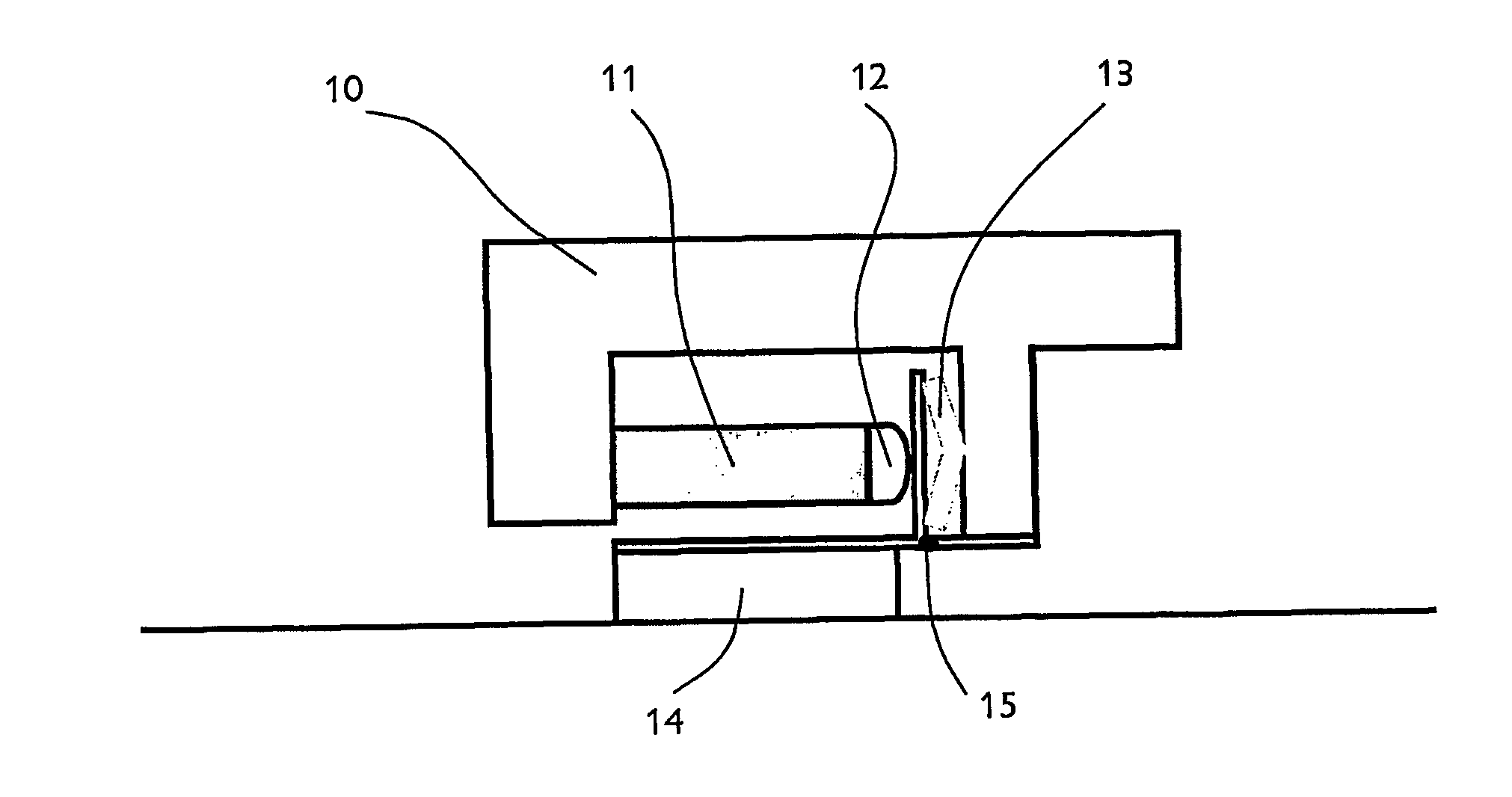Acoustic actuators
a technology of actuators and actuators, applied in the direction of transducer types, frequency/directions obtaining arrangements, electrical apparatus, etc., can solve the problems of high voltage, low piezo actuators, and unsuitable physical profiles for some applications, and achieve the effect of improving the bass response of panel loudspeakers
- Summary
- Abstract
- Description
- Claims
- Application Information
AI Technical Summary
Benefits of technology
Problems solved by technology
Method used
Image
Examples
Embodiment Construction
[0032] Referring first to FIG. 1, an active element 11 is mounted generally horizontally on an inertial or back mass 10 which is attached to a foot 14 through a resiliently flexible plate 15 acting as a solid-state hinge. A bearing plate 16 extends normally to the hinge and is engaged by a curved bearing surface 12 mounted on the end of the active element 11. A leaf spring 13 is mounted between the bearing plate 16 and the back mass 10 so as to apply controlled pre-tension to the active element. The active element thus drives horizontally, and the construction of the actuator converts this motion into a vertically acting force using the hinge, which is preferably a solid-state hinge to reduce energy losses. A hinge with a pin and / or bearing surface would generate unacceptable losses because of the small amplitude of the movements involved. The curved bearing surface 12 may be part of the element or is more conveniently a separate piece of material of low compliance.
[0033] In the ca...
PUM
 Login to View More
Login to View More Abstract
Description
Claims
Application Information
 Login to View More
Login to View More - R&D
- Intellectual Property
- Life Sciences
- Materials
- Tech Scout
- Unparalleled Data Quality
- Higher Quality Content
- 60% Fewer Hallucinations
Browse by: Latest US Patents, China's latest patents, Technical Efficacy Thesaurus, Application Domain, Technology Topic, Popular Technical Reports.
© 2025 PatSnap. All rights reserved.Legal|Privacy policy|Modern Slavery Act Transparency Statement|Sitemap|About US| Contact US: help@patsnap.com



